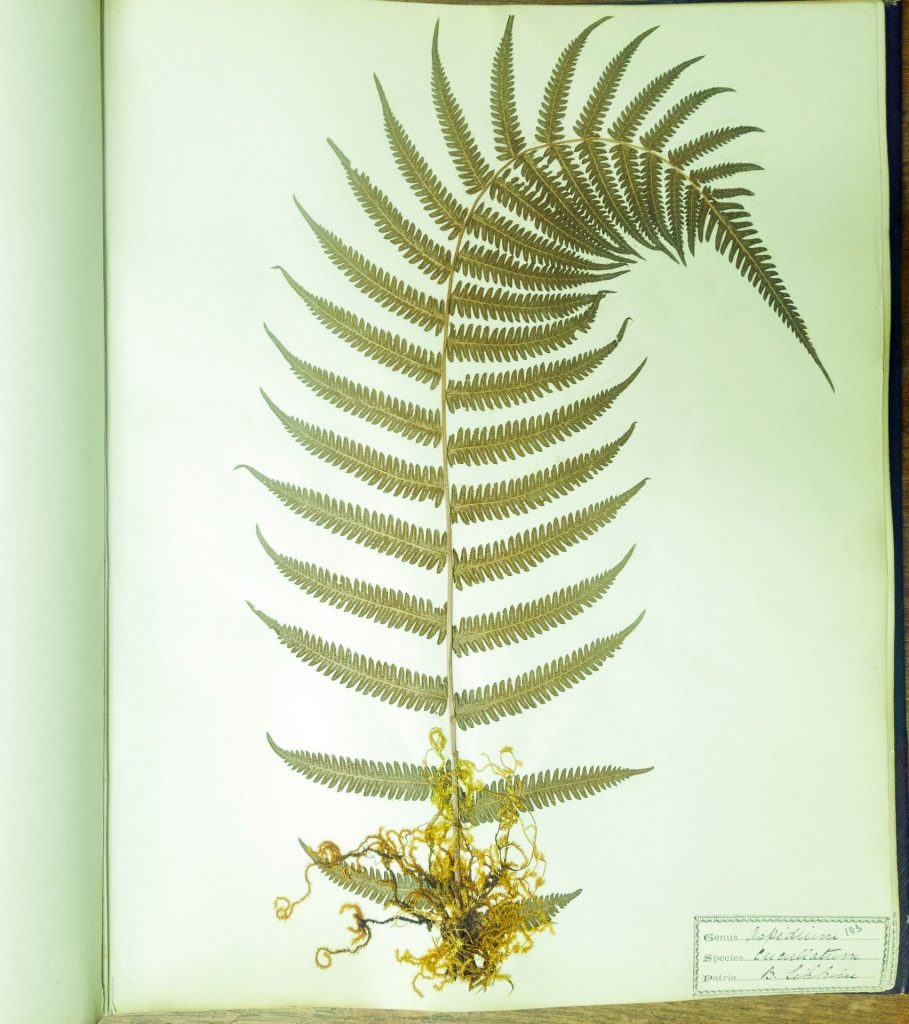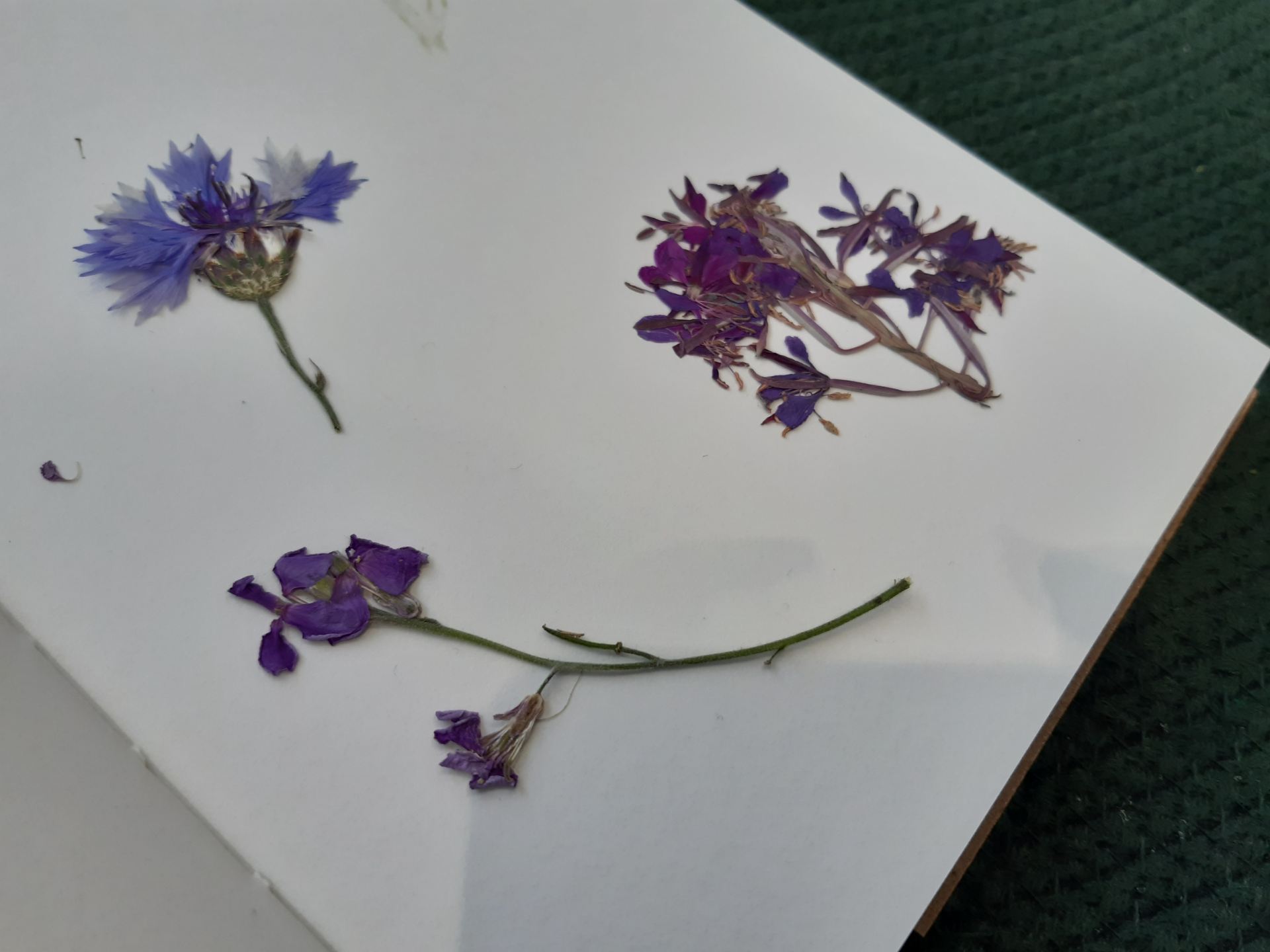Amy Crawford, MGS Funded Museum Engagement Officer
The herbarium is an often-overlooked part of our museum collections. Housing over 13,000 specimens from Angus to Darjeeling, the room is rather magical. Behind every small door is a collated stack of pressed plant specimens. The herbarium (Latin – hortus siccus – dry garden) is often mistaken as a collection of living plants but is a collection of dried and pressed plant specimens which are categorised and organised, often used for scientific study.

The art of pressing flowers and leaves has been around since ancient Egypt but really became popular during the Victorian Era. It was a quintessential hobby for all with botanical scrapbooks becoming extremely popular. The process is incredible easy which makes it so accessible, requiring little more effort than to place a plant between two pieces of paper and place a weight on top.

There has been a recent resurgence in flower pressing and similar activities due to the ‘cottagecore’ hashtag. Founded in the early 2010s, this aesthetic movement revolving around country living – sometimes through literal rose-coloured glasses – has become popular with young people over the early 2010s through Tumblr and more recently through the social media app TikTok.
A quick analysis of the term reveals that online searches for ‘cottagecore’ skyrocketed right as lockdown hit across the UK in March 2020. With more time on the hands of many and people finding themselves out of work, scrolling through Instagram, Tiktok and Pinterest became increasingly popular. Along with becoming a virtual escape from being stuck in a house in perhaps a city, the cottagecore movement became a safe space for LGBT+ communities, away from the sometimes not so accepting rural communities of the real world. A lot of people find it a safe space to explore typically female-gendered activities like gardening, sewing, cooking and of course, flower-pressing.
With the Herbarium in mind I decided to have a short wander around my coastal town to see what flowers I could find to press. Roadsides and hedgerows offered a small diversity of plants. I immediately recognised the Honesty plant with its distinctive moon shaped purple and silver seed pods. Blackberry vines creeped around the grass, small starlings picking off berries before they could fully ripen. There was a scattering of various wildflowers too, yellow and red pockets of colour stretching up to the morning sun.

Reaching the sand dunes and the rising tide I was met with a surprising number of flowers. Pockets of purple bush-like flowers littered the sand. This was Sea Rocket as I later discovered from my plant identification book – the young leaves and stems are edible giving a sharp bitter taste. Bright white large daisies nestled on the sand dunes attracted pollinators close to the sea – these being aptly named Sea Daisies. I then pressed these flowers to use in scrapbooks later and it is indeed incredibly satisfying. Easy to see why so many people enjoy this hobby!
Get in touch with us to come and have a look at our Herbarium collections and be inspired by the centuries old flower and leaf pressings.
